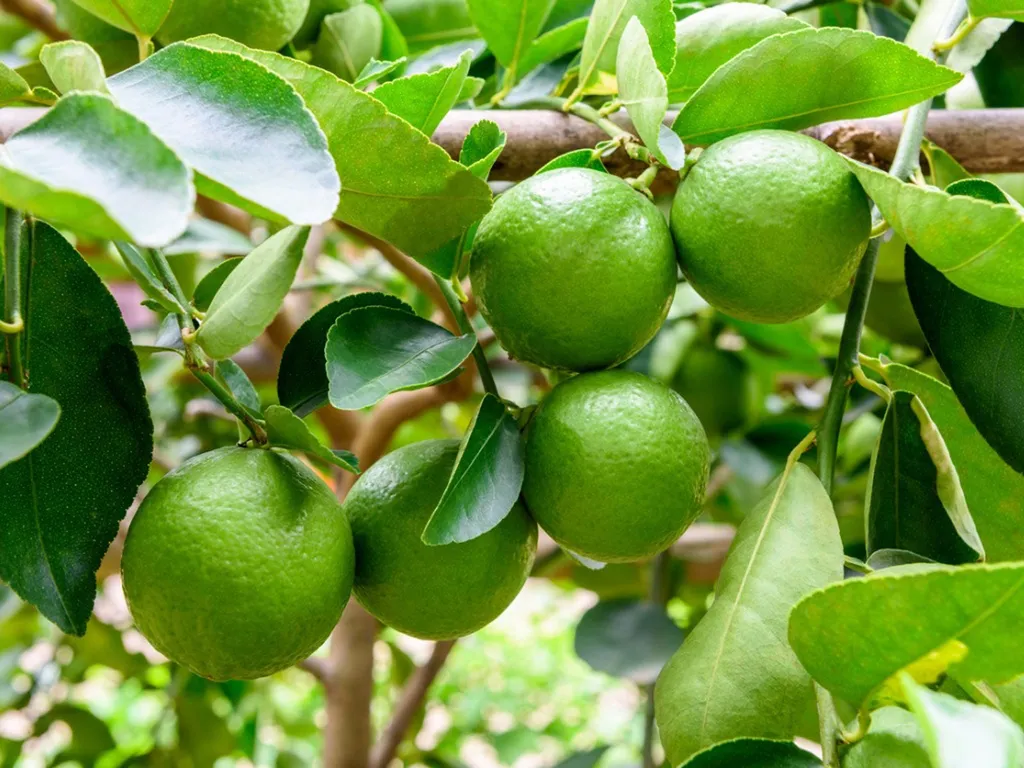+1-214-701-9955
- Gardening For Food. A better way of living

A member of the Rutaceaea family, the lime plant is a smaller, 20-foot (5 m) tall and across citrus tree grown for its tangy, seedless fruit. The resulting limes are used in a variety of cuisines for their punchy tart yet fresh flavor and aroma.
Lime Tree Care
Citrus can be finicky but if you provide your lime with the proper elements of light, water, temperature, humidity, and soil, you too may be singing Margaritaville.
Light - Limes thrive in the subtropical to tropical regions of the world, specifically in USDA zones 9-11 in the U.S. They prefer full sun and are intolerant of shade conditions.
Water - Like other citrus, lime trees dislike having their “feet” or roots wet, however, they do prefer consistently moist soil. In most soils, mature trees should be watered slowly yet deeply about every couple of weeks. Newly planted trees need to be watered every other day for the first week. Thereafter, it is sufficient to irrigate them 1-2 times a week for their first couple of months. As the tree establishes, reduce watering to once a week unless there is an extended period of drought in which case water twice a week During the rainy season, quit or reduce irrigation
Temperature & Humidity - Limes should be planted in the warmest area of the landscape or home. Keep potted limes away from drafts in the home. They prefer temperatures of about 55-85 F (13-30 C). They can tolerate short periods of temps to 32 F (0 C), but if you live in an area that routinely expects chilly temperatures, grow your lime tree in a pot and bring it inside or into another protected area. Like other citrus, limes like humidity above 50%. Indoor-grown limes can benefit from a humidifier nearby or can be placed on a saucer filled with pebbles. Spritzing the plant with water can also help raise the humidity level.
Soil - Lime trees are remarkably adaptable with regard to their soil, but it should always be well-draining. They do seem to prefer sandy/loam as well.
Fertilizer - Lime trees will thrive with supplemental fertilizer. They do tend to be deficient in iron, zinc, and manganese. First-year trees should be fed with 1 tablespoon (15 ml) of nitrogen-rich fertilizer from May to August. Double this amount from years 2-5. When the tree is mature at 5 years of age, the tree will likely need 1 ⁄ 2-1 pounds (115-225 g) of citrus fertilizer per year. Follow the manufacturer's instructions and take care not to over-fertilize which can cause other issues.
Problems - Pests & Diseases Limes are susceptible to a number of sucking and other small insects such as aphids, scale, leaf miners, a variety of mites, and the Asian citrus psyllid.
Some people may be prone to skin irritation, and contact dermatitis from lime trees. Overwatering may result in a variety of fungal diseases as well as citrus canker, citrus greening, scab, greasy spot, Melanose, and Tristeza.
Lime trees may also be prone to lime blotch disease, a genetic disorder, and other physiological disorders such as oil spotting and Stylar-end rot. Injury to the tree is also a common problem due to damage caused by line trimmers and lawnmowers.